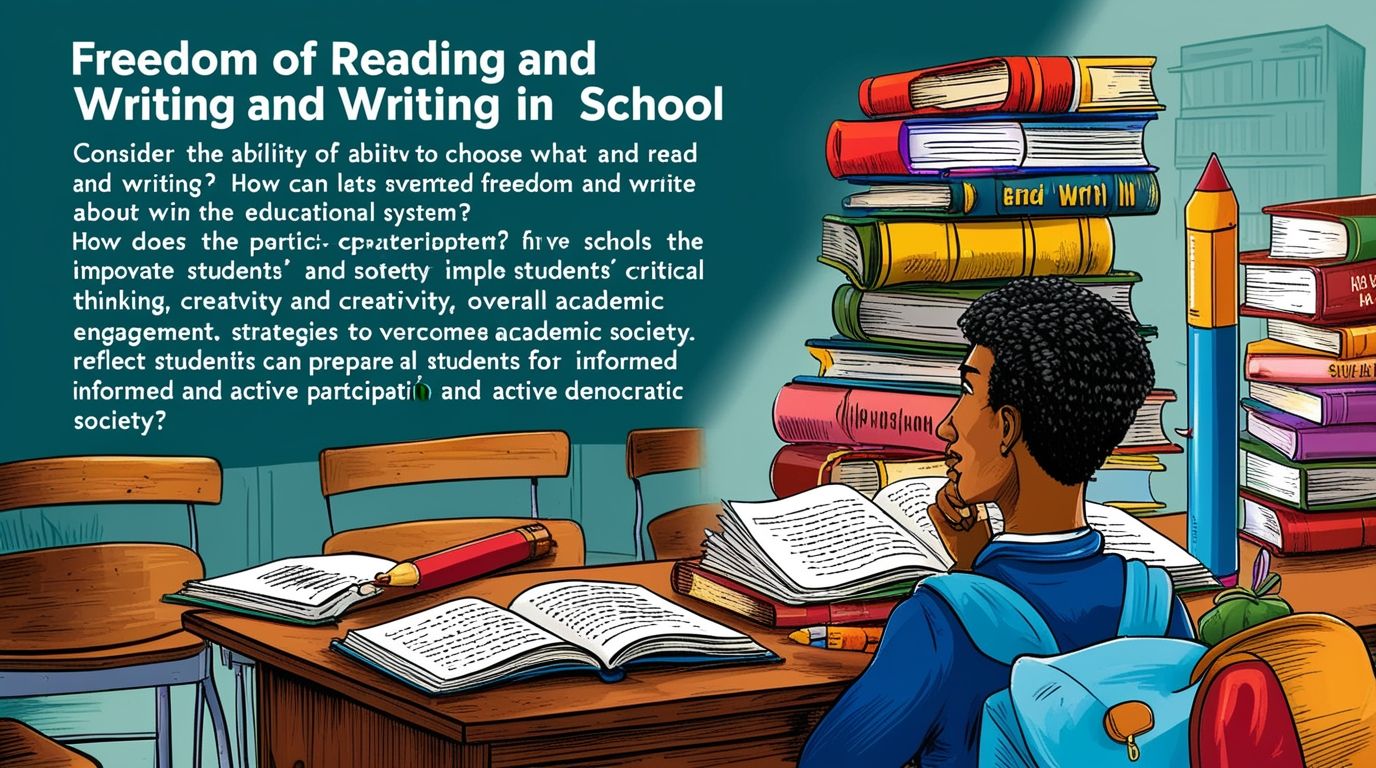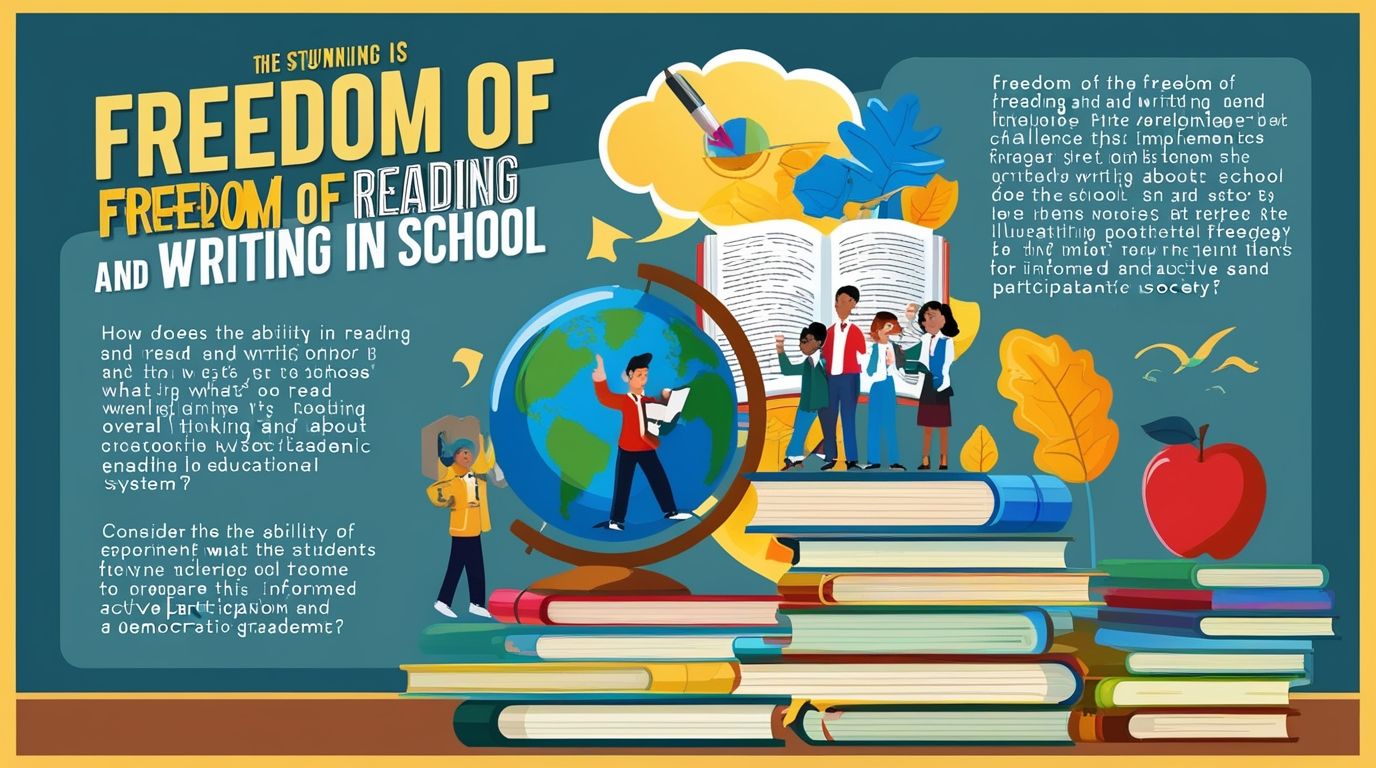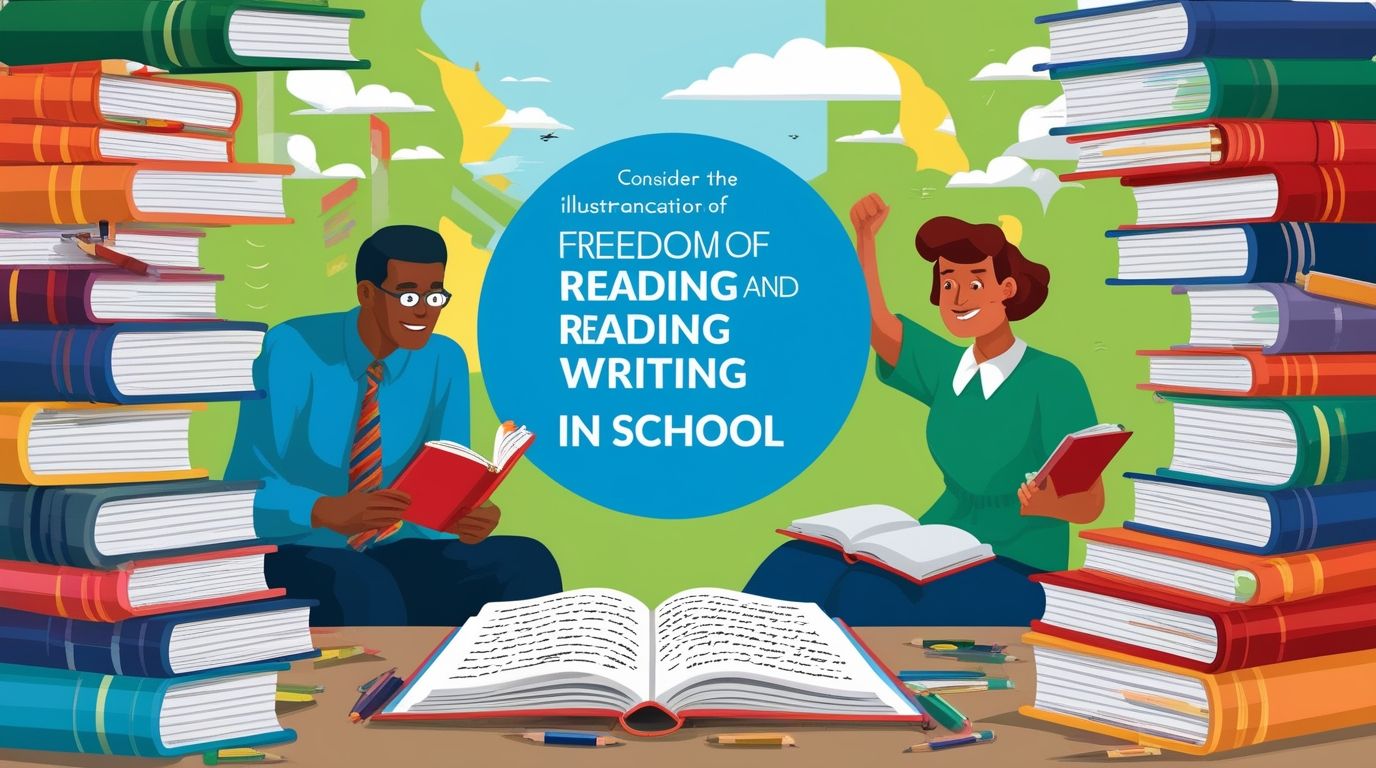Freedom of Reading and Writing in School: An Essential Element of Education
Freedom of Reading and Writing in School in an era where the free exchange of ideas is more important than ever. The concept of freedom of reading and writing in schools has become a pivotal aspect of modern education. This freedom not only empowers students to explore diverse perspectives but also fosters critical thinking, creativity, and a lifelong love for learning. However, achieving this ideal within the educational system is not without its challenges. This article delves into the significance, benefits, and hurdles associated with ensuring freedom of reading and writing in schools.
The Importance of Freedom of Reading and Writing
The ability to read and write freely in schools serves as the cornerstone of a democratic society. It promotes intellectual freedom, allowing students to encounter and engage with a broad spectrum of ideas. This exposure is crucial in developing well-rounded individuals who can think critically and independently. Furthermore, freedom of reading and writing cultivates empathy by enabling students to understand and appreciate perspectives different from their own.
Intellectual freedom in schools also encourages self-expression. When students are free to write on topics that interest them, they are more likely to develop a genuine love for writing. This enthusiasm can translate into improved writing skills and better academic performance overall. Moreover, allowing students to choose their reading materials can foster a deeper connection with literature, turning reading from a chore into a pleasure.

Benefits of Reading and Writing Freedom
- Enhanced Critical Thinking Skills: When students are exposed to a variety of viewpoints through their reading, they learn to analyze and evaluate information critically. This skill is invaluable, not just in academic settings, but in everyday life as well.
- Increased Engagement and Motivation: Freedom in reading and writing can lead to higher levels of engagement. Students are more likely to participate actively in discussions and complete assignments with enthusiasm when they have a say in the topics they explore.
- Development of Empathy: Literature offers a window into the lives and experiences of others. By reading diverse authors and genres, students can develop a better understanding of different cultures, histories, and social issues, fostering empathy and social awareness.
- Promotion of Creativity: Writing without constraints encourages creativity. Students can experiment with different styles, genres, and ideas. Which can lead to a more dynamic and innovative approach to problem-solving.
- Preparation for the Real World: In the real world, individuals are constantly bombarded with information from various sources. Learning to navigate this information and form well-informed opinions is a crucial life skill that is honed through the freedom of reading and writing.
Challenges to Implementing Reading and Writing Freedom
Freedom of Reading and Writing in School despite the clear benefits, several challenges exist in implementing true freedom of reading and writing in schools.
- Censorship and Controversy: One of the most significant barriers is the potential for censorship. Books and topics deemed controversial or inappropriate by school boards, parents, or governments can be banned or restricted, limiting students’ exposure to diverse viewpoints.
- Curriculum Constraints: Standardized curricula often leave little room for student choice. Teachers are required to cover specific material to prepare students for standardized tests, which can limit opportunities for exploring personal interests.
- Resource Limitations: Not all schools have the resources to provide a wide variety of reading materials. Budget constraints can result in limited libraries and fewer options for students.
- Teacher Preparedness: Encouraging freedom in reading and writing requires teachers. Who are comfortable with and trained in facilitating open-ended discussions and guiding students in independent projects. Not all educators may feel equipped to handle these tasks.
- Balancing Freedom with Guidance: While freedom is essential, so is guidance. Striking the right balance between allowing students to explore independently and providing necessary support and direction can be challenging.

Strategies for Promoting Freedom of Reading and Writing
To overcome these challenges, several strategies can be employed:
- Diverse Curriculum Design: Schools can design curricula that include a wide range of perspectives and voices. This can be achieved by incorporating books and materials from various cultures, time periods, and genres.
- Encouraging Choice: Allowing students to choose their reading materials for certain assignments can increase their engagement and motivation. Teachers can provide a list of approved books from which students can select, ensuring a balance between freedom and appropriateness.
- Creating Inclusive Libraries: Schools should invest in diverse and inclusive libraries that reflect a wide array of experiences and viewpoints. Partnerships with local libraries and online resources can help mitigate budget constraints.
- Professional Development for Teachers: Providing teachers with ongoing professional development opportunities can help them feel more comfortable and skilled in facilitating a classroom environment that values freedom of expression.
- Open Dialogue with Parents and Community: Engaging in open dialogue with parents and the community about the importance of intellectual freedom can help build support for policies that promote diverse reading and writing opportunities.
- Developing Critical Media Literacy: Teaching students how to critically evaluate sources of information can empower them to make informed choices in their reading and writing. This skill is particularly important in the digital age, where information is abundant and not always reliable.
Conclusion
Freedom of reading and writing in schools is not just an educational ideal but a fundamental right that supports the development of informed, empathetic, and creative individuals. While challenges such as censorship, curriculum constraints, and resource limitations exist. They can be addressed through thoughtful strategies and a commitment to fostering intellectual freedom. By prioritizing the freedom to read and write, schools can help prepare students not only for academic success but for active and thoughtful participation in a democratic society. Ultimately, the goal of education should be to cultivate a love of learning and an appreciation for diverse perspectives. Ensuring that students have the freedom to explore, read, and write is a crucial step toward achieving this goal. By embracing and promoting this freedom, educators can empower the next generation to become critical thinkers, compassionate individuals, and engaged citizens.

6 thoughts on “Freedom of Reading and Writing in School”
Comments are closed.